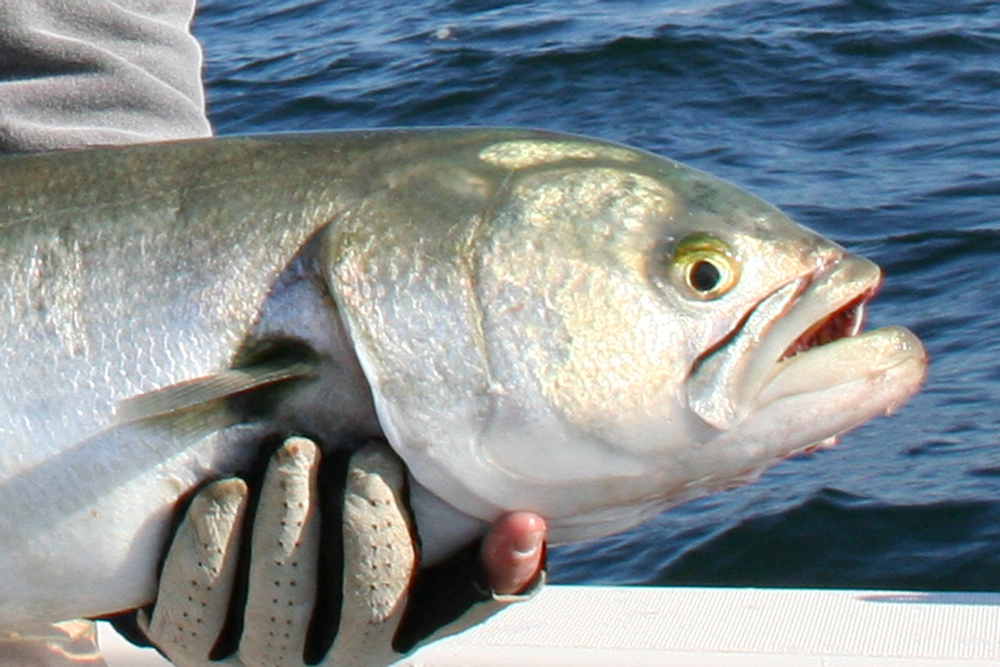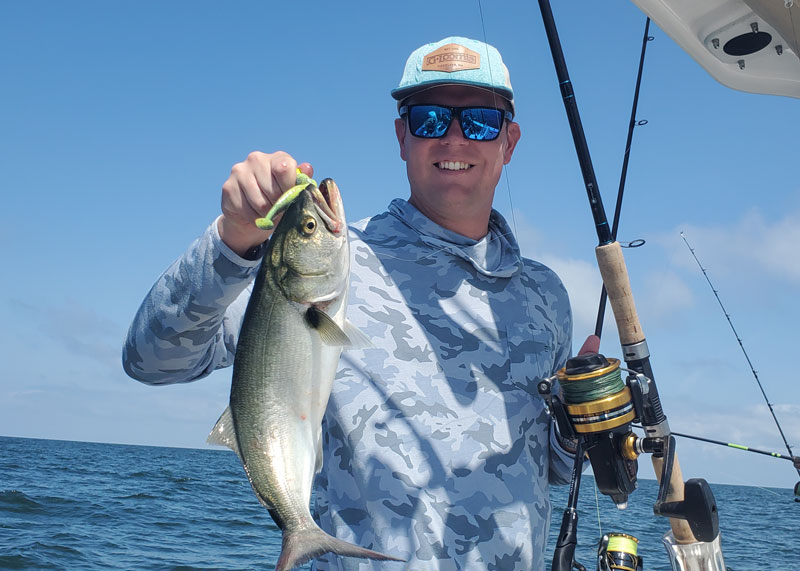With a bite pressure of four tons per square inch and dozens of dagger-sharp teeth, the mako shark jumps to mind when considering what species might be the most dangerous in the ocean. But that would be an incorrect guess, as would be the great white shark, tiger sharks, bull sharks, or any other shark species. Because in fact, it’s the lowly bluefish that hurts more people every year. On a single day in Dade county,

- Chopper blues are very sensitive to vibrations. So when the water is cloudy or light levels are low, lures with rattles or spoons that wobble and put out vibrations are often most effective. Savvy anglers probably know that in extremely calm conditions very loud rattlers can spook fish, rather than attract them. But in the case of blues this goes out the window - you can't scare 'em off if you try.
- Bluefish feed by cutting chunks out of their prey’s body, as opposed to swallowing them whole as a striper or a redfish might. So don’t freespool on a strike, and then wait for the fish to inhale your offering. Instead, keep a taunt line and set the hook the moment you feel a bite. It may take several hits and misses before the blue finds your hook, but that’s not problematic since they usually keep coming back for more. If all you get are swings and misses, down-size your bait so the fish has a better chance of getting a hook in its jaws on the first few attacks.
- Bluefish will eat just about anything, but the majority of their diet is made up of finfish. Accordingly, they’re attracted to lots of flash. When choosing artificial lures for trolling or casting, shiny silver metals often work best and wobbling spoons are always a go-to lure.
- You'll regularly need to use wire leader to keep from getting bitten off. But blues can often spot wire, and will actually bite off chunks of your bait on either side of the hook. When this is happening, try rigging with flourocarbon leader and circle hooks. You'll still have bite-offs sometimes but when the circle hook finds its purchase in the corner of the fish's jaw prior to the line getting snipped, the blue's teeth are then rubbing only against the hook's metal.
- When you're fishing for a mix of species with soft plastics and bluefish make their presence known by biting off the ends of your tails, switch to tooth-proof lures. The plastics billed as bite-proof will usually hold up through a dozen or so bluefish attacks.

Bluefish may not get all the glory, but these are awesome fighters and smaller ones taste great, too (fish over 24 or 25 inches aren't ideal for eating, and most anglers release them to fisght another day). If you want to get after 'em, also be sure to check out 10 Tips for Catching More Summertime Bluefish and Bluefish in the Chesapeake: You, My Yellow Eyed Girl.
Editor's Note: This article was originally published in July of 2018 and was last updated in May of 2025.